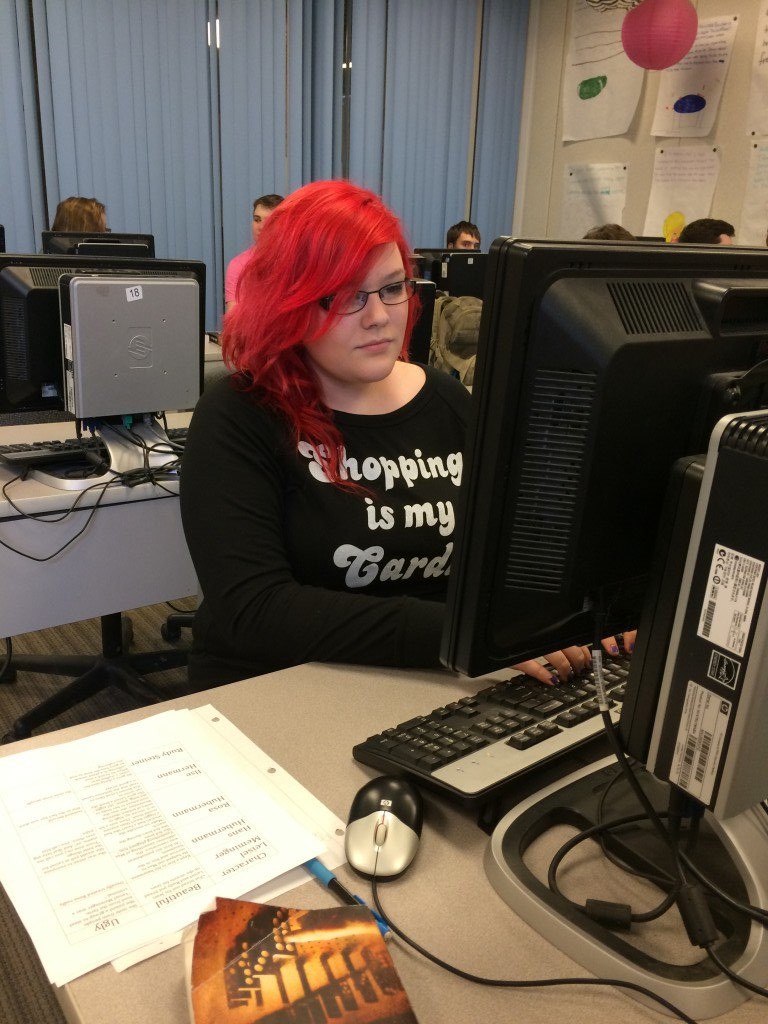I have tried (and failed) at incorporating bell ringers into my class in the past, but this summer I stumbled across something that I knew I had to try. I read a post published by Edutopia on their Facebook account which suggested that covering a poem each day with students can have a dramatic impact on their outlook and understanding of poetry. I like to teach what I love, and I don’t love poetry. I usually teach a short poetry unit at the end of the year which encourages students to explore types of poems they like and write their own poems according to style guidelines (aka- go outside and write nature haikus when the weather is nice). We don’t spend much time analyzing, and we don’t give the classics the time they deserve. I knew I was doing my students a disservice by not covering poetry like I should. I also knew that I was going to have two sections of college prep English 9 this year, and many of those students would later go on to take AP English classes which would require them to critically analyze poetry more frequently.
I wrote a post a while ago about the power of working outside your comfort zone, and I thought this might be a great way to cover poetry without the overwhelming stress that a poetry unit brings me. My school bought a school wide contract with Blackboard in January, so I decided I would use Blackboard for my students instead of Google Classroom or Edmodo which I have used in the past. I have taken some of my master’s courses online, so I’m familiar with forum/discussion posts. When I realized Blackboard has the capacity for forum posts, I thought this might be a great way to incorporate my daily poems.
I did some Googling over the summer and began to compile some poems that I liked. They had to be short enough for students to do a quick reading and have a general understanding and they had to be interesting. I was able to find more than enough poems to use for the year. Some of the poems are classics that any English teacher would suggest I teach. Some of the poems are silly. I loved reading Shel Silverstein when I was a kid, so his poems show up throughout the list. I created a folder in my google drive and started saving poems. I did a new doc for each poem and saved them all in the Poem of the Day folder. I wanted to make sure that I had these poems archived for the future in case the district decided to terminate their contract with Blackboard. I would always have them compiled on my drive. From there, I set up a Poem of the Day tab in my Blackboard class and created weekly folders within that tab. After that, I created my discussion posts. I named each post with the day that the poem would be presented and set the date which they would appear to my students.
Students will have 5-10 minutes each day to read their daily poem and answer the question I ask along with the poem. I have the due date set on Blackboard as 11:59 pm on the day the poem is assigned. So, if a student needs more time to work, they can complete their response outside of class My questions will vary and will cover all of those poetry analysis items they will need to know how to do. Sometimes we will discuss the poem in class, sometimes they will just answer and I will respond. I will be doing this with over 50 students a day, so sometimes the grade will just be a completion grade for participating.
My purpose in this activity is exposing them to a TON of poetry. I want to almost desensitize them to poetry so they don’t have the fear and anxiety of poetry that I have. I want them to be able to view poetry as a piece of literature and a text just like anything else I give them instead of something scary. Incorporating a daily bellringer also helps create routine and structure within the class. I am hoping to start with some basic comprehension and response questions and then build my students up with their ability as the year goes on. By the end of the year, my hope is they will be able to do a quick but critical analysis of a poem and come up with some IDEAS about the poem that they could write about when asked. I’m hoping the discussion forum setting of the bell ringer helps me stick with this activity. It seems silly, but I always forgot to write the bell ringer on the board. Blackboard should let me sit down and load a few week’s worth of poems and questions at a time, so I have a better chance at following through.
What are some poems that are MUST READS in your class? I wonder if they are on my list.
Be sure to check out Edutopia’s original post on 4 Reasons to Start Class With a Poem Each Day.





